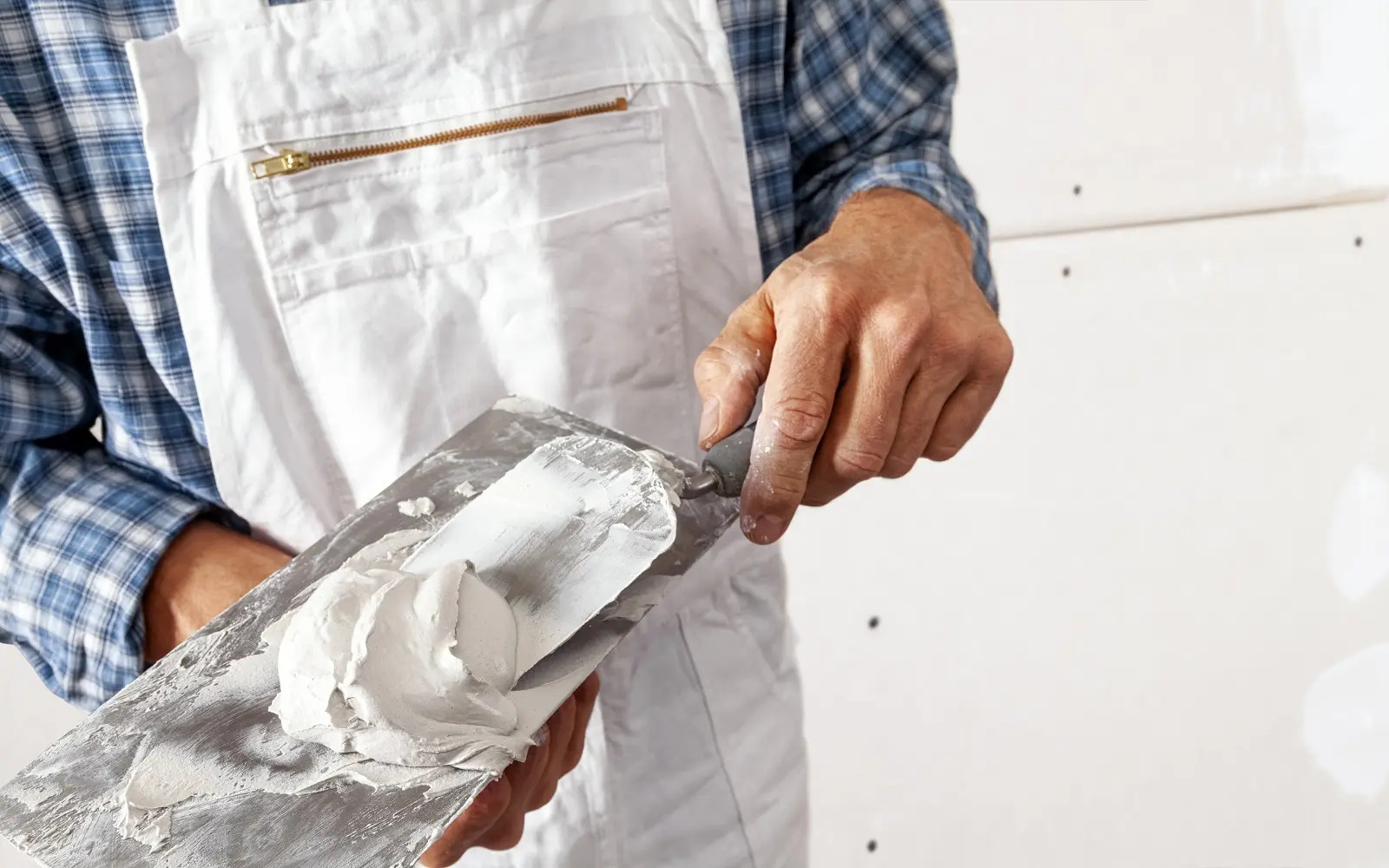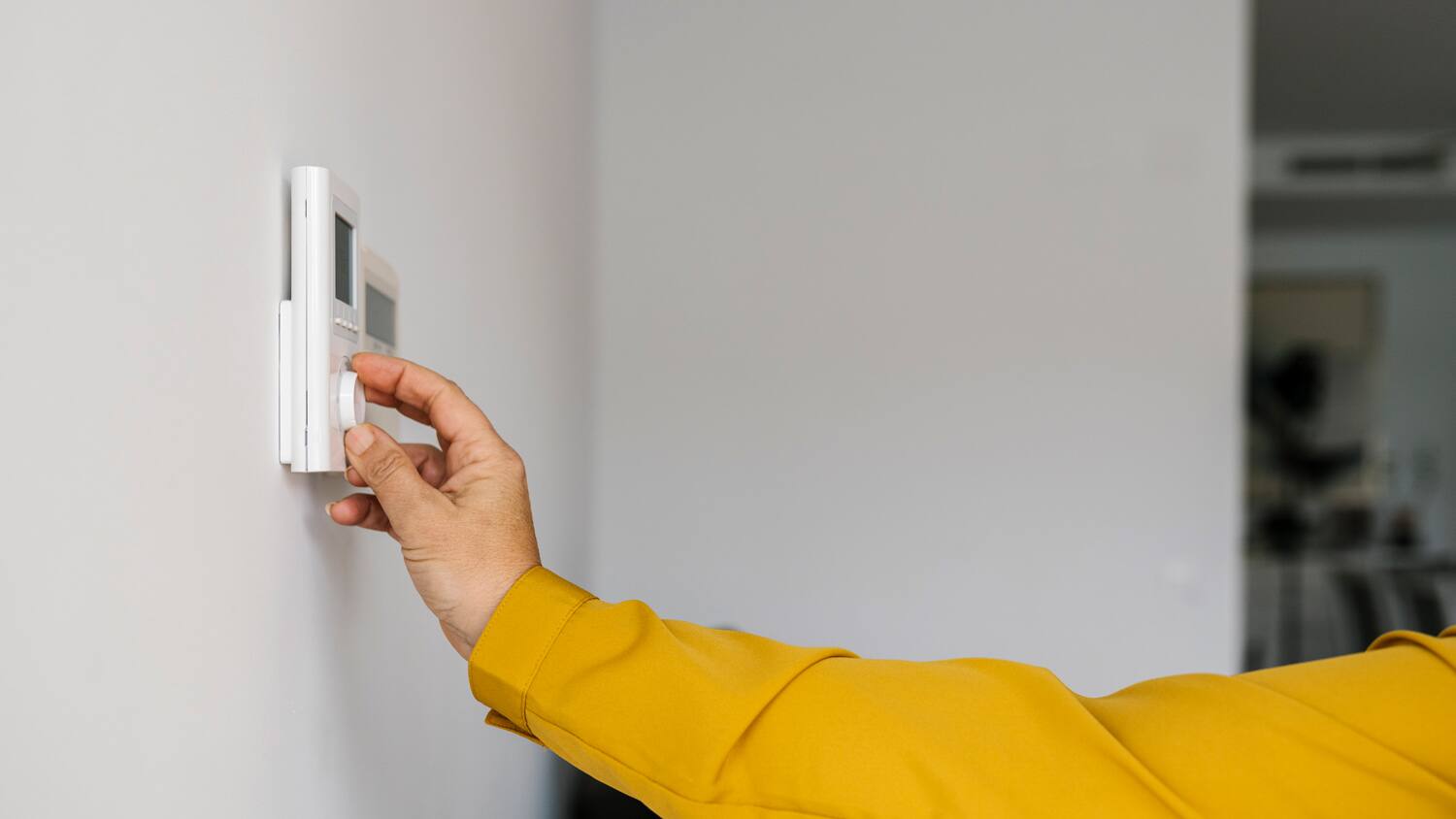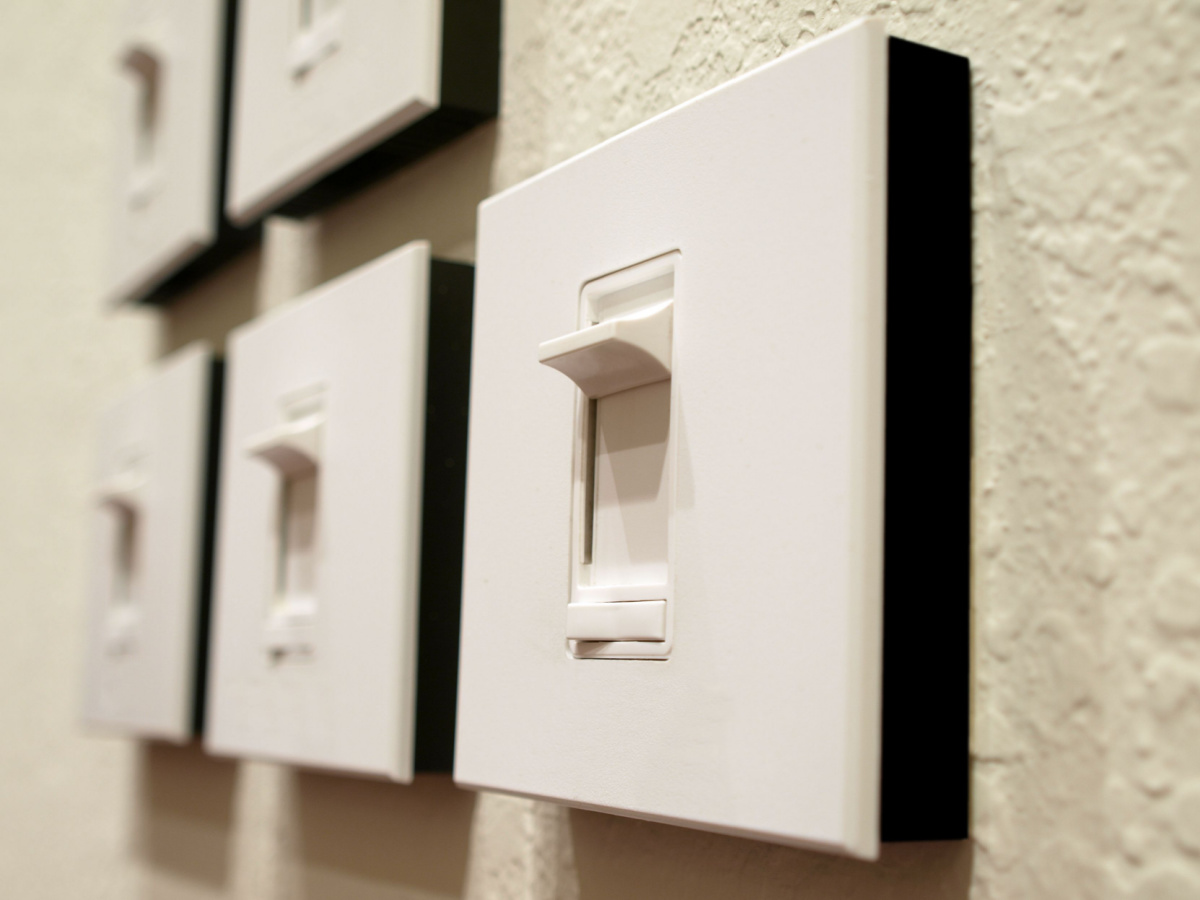Home>Dining>Events & Etiquette>How To Tell Someone They Have Bad Table Manners


Events & Etiquette
How To Tell Someone They Have Bad Table Manners
Modified: January 9, 2024
Learn the art of events etiquette and tactfully address someone's bad table manners with our helpful guide. Master the art of communication and maintain harmony at social gatherings.
(Many of the links in this article redirect to a specific reviewed product. Your purchase of these products through affiliate links helps to generate commission for Storables.com, at no extra cost. Learn more)
Introduction
Table manners play a crucial role in social settings and formal gatherings. They reflect our etiquette and respect for others, making them an essential aspect of our behavior. Good table manners can leave a positive impression, while bad table manners can create discomfort and even embarrassment for both the person exhibiting them and those around them.
However, addressing someone’s bad table manners can be a delicate matter. It requires careful consideration and tact to deliver feedback without offending or alienating the person. In this article, we will explore the importance of table manners, discuss signs of bad table manners, and provide guidance on how to effectively communicate with someone about their behavior, while maintaining sensitivity and respect.
The purpose of this article is to empower readers with the knowledge and skills necessary to navigate these situations effectively, ultimately fostering a more enjoyable and harmonious dining experience for everyone involved.
Key Takeaways:
- Addressing bad table manners requires empathy and tact. Use “I” statements, offer constructive feedback, and provide resources for improvement to support the person’s growth.
- Choose the right setting, be specific about behaviors, and encourage practice and patience. Approach the conversation with sensitivity and a genuine desire to help.
Read more: What Are Bad Table Manners?
Importance of Table Manners
Table manners are not just a set of rules to follow; they are a reflection of our character, upbringing, and respect for others. Good table manners create a positive impression and contribute to a pleasant and comfortable dining experience.
First and foremost, table manners demonstrate our respect for others. By practicing proper etiquette, we are showing consideration for those around us, acknowledging their presence, and making them feel valued. It promotes a sense of inclusivity and enhances social interactions.
In addition, table manners can impact our professional lives. Many business meetings and negotiations take place over meals, and having polished table manners can leave a lasting positive impression on clients, colleagues, and superiors. It showcases professionalism, attention to detail, and the ability to navigate social situations with ease.
Furthermore, good table manners contribute to our personal well-being. Eating in a mindful and respectful manner allows us to savor our food, appreciate the culinary experience, and practice good digestion habits. It promotes a healthier relationship with food and encourages a more holistic approach to nourishment.
Lastly, table manners serve as a bridge between different cultures and customs. In a globalized world, where encounters with people from various backgrounds are commonplace, understanding and respecting different table manners can promote cross-cultural understanding and appreciation.
Overall, good table manners are essential in fostering positive social interactions, enhancing professional relationships, promoting personal well-being, and embracing diversity. They are not just a superficial set of rules, but rather a reflection of our character and considerate nature.
Signs of Bad Table Manners
Identifying signs of bad table manners can help you address specific behaviors when offering feedback to someone. While it is important to approach the conversation with sensitivity and understanding, recognizing these signs can help guide your discussion and provide concrete examples of areas for improvement.
- Chewing with an open mouth: One of the most common signs of bad table manners is chewing food with an open mouth. This can be unappetizing and disrespectful to others at the table.
- Talking with food in the mouth: Another indicator of poor table manners is speaking while having food in the mouth. This can be difficult to understand and can lead to unwanted food particles being sprayed during conversation.
- Using utensils incorrectly: Improper use of utensils, such as holding a fork like a spoon or using a knife incorrectly, can be a sign of lacking table manners. It is important to use utensils properly to avoid potential accidents and display proper etiquette.
- Reaching across the table: Stretching across the table to grab food or utensils instead of politely asking for them to be passed is considered impolite. It is good table manners to wait for items to be passed to you or politely requesting them to be passed.
- Slurping or making loud noises while eating or drinking: Noisy eating or drinking, such as slurping soup or beverages, can be distracting and unpleasant to others. It is important to consume food and beverages quietly and discreetly.
- Interrupting or monopolizing conversations: Engaging in conversation monopolization by consistently interrupting or dominating discussions can be a sign of poor table manners. It is important to practice active listening and allow others to speak and contribute to the conversation.
- Improper use of napkins: Using a napkin to wipe one’s face or hands in an inappropriate manner, such as using it as a handkerchief or leaving it crumpled on the table, signals a lack of table manners. Napkins should be used to dab the mouth discretely and placed on one’s lap when not in use.
- Playing with utensils or tableware: Fidgeting with utensils, playing with tableware, or using them as toys can be viewed as disrespectful and distracting to others at the table. Utensils should be used solely for their intended purpose.
- Being rude or disrespectful to servers: How a person treats restaurant staff showcases their table manners. Being impolite, dismissive, or disrespectful towards servers is a clear sign of bad table manners and a lack of respect for others.
These are just a few examples of signs of bad table manners. It is important to approach each situation with empathy and understanding, focusing on specific behaviors that can be improved, rather than criticizing the person as a whole.
Approach with Tact and Sensitivity
When addressing someone’s bad table manners, it is crucial to approach the conversation with tact and sensitivity. Remember, the goal is to help the person improve their behavior, not to shame or embarrass them. Here are some tips for handling the situation gracefully:
- Choose the right time and place: Find a suitable moment when you can have a private conversation without distractions or time constraints. Avoid bringing up the topic during a meal, as it may cause unnecessary discomfort or embarrassment.
- Be empathetic: Put yourself in the other person’s shoes and approach the conversation with understanding. Recognize that everyone has different levels of awareness when it comes to table manners, and your goal is to offer guidance, not criticize.
- Focus on the behavior, not the person: When giving feedback, make sure to emphasize specific behaviors rather than attacking the person’s character or making generalizations. This helps to keep the conversation constructive and avoids creating a defensive response.
- Use “I” statements: Frame your feedback using “I” statements to express your own observations and feelings. For example, say, “I noticed that when you chew with your mouth open, it can be distracting for others at the table.” This approach avoids sounding accusatory and helps the person understand the impact of their actions.
- Offer suggestions, not judgments: Instead of simply pointing out the negative behavior, provide suggestions and alternatives. For instance, you can say, “It might be more comfortable for everyone if we try to chew with our mouths closed. It helps with proper digestion and avoids any unpleasant situations.”
- Be patient and understanding: Changing habits takes time, so be patient with the person as they work on improving their table manners. Encourage their efforts and recognize positive changes along the way.
Remember that everyone has room for growth and improvement, and it is important to approach these conversations with kindness and respect. By employing tact and sensitivity, you can help create a supportive environment for someone to enhance their table manners without causing them unnecessary discomfort.
Choose the Right Setting
When discussing someone’s table manners, the setting in which you have the conversation can significantly impact the outcome. Here are some considerations to help you choose the right setting:
- Privacy: Ensure that the conversation takes place in a private setting where you can have an uninterrupted discussion. This can help the person feel more at ease and reduce the risk of them becoming embarrassed or defensive.
- Comfortable environment: Select a setting where both you and the person you’re addressing feel comfortable. This could be a quiet corner in a café, a peaceful park, or even in the comfort of your own homes. The more relaxed the environment, the more receptive they are likely to be to your feedback.
- Avoid public humiliation: Be mindful of not embarrassing the person by having the conversation in front of others. Publicly addressing their behavior can lead to heightened emotions and make it more challenging for them to accept and implement your suggestions.
- Timing: Timing is crucial when choosing the right setting. Find a time when both of you are calm and not distracted by immediate responsibilities or time constraints. Avoid having the conversation when either of you is hungry, irritable, or preoccupied with other matters.
- Create a safe space: Make sure the environment feels safe and non-judgmental. Start the conversation by expressing your genuine concern and desire to help them improve their table manners. Reinforce that your intention is not to criticize or belittle, but rather to support their growth.
- Consider their comfort: Take into account the person’s personality and level of sensitivity. Some individuals are more open to constructive feedback, while others may be more resistant. Gauge their receptiveness, and adjust your approach accordingly.
- Follow-up: After the initial conversation, offer ongoing support and follow-up discussions to check on their progress. This shows your continued interest in their growth and encourages them to stay committed to improving their table manners.
By choosing the right setting, you create an environment that fosters open communication and receptiveness. Remember, the goal is to help the person grow and develop better table manners, not to embarrass or criticize them.
Be Specific and Focus on Behavior
When addressing someone’s table manners, it’s important to be specific and focus on the specific behaviors you wish to address. By providing clear examples, you can effectively communicate your concerns and help the person understand exactly what needs improvement. Here are some tips on how to approach the conversation:
- Observe and identify: Pay attention to the specific table manners that need improvement. Take note of the behaviors that are causing discomfort or affecting the overall dining experience.
- Choose your examples: Select a few specific examples to discuss with the person. Focus on the ones that are particularly noticeable or have a significant impact on others.
- Express your observations: Start the conversation by expressing what you have noticed regarding their table manners. For instance, you could say, “I’ve noticed that you have a habit of speaking with food in your mouth.”
- Explain the impact: Help the person understand why the particular behavior is problematic. Share how it affects others’ comfort, the dining atmosphere, or even their own image and reputation.
- Encourage self-reflection: Ask open-ended questions to encourage the person to reflect on their behavior. For example, you could ask, “Have you ever considered how speaking with food in your mouth might make others feel?” This prompts them to think about the impact of their actions.
- Suggest alternatives: Offer specific suggestions on how to improve the behavior. For example, you could say, “Instead of speaking with food in your mouth, try taking small bites and pausing to chew and swallow before engaging in conversation.”
- Share personal experiences: If applicable, share any personal experiences or anecdotes related to the behavior you are discussing. This can help the person relate to your perspective and understand that you are speaking from a place of empathy and understanding.
- Reinforce positive behaviors: Whenever the person demonstrates positive table manners, express your appreciation and acknowledge their progress. Positive reinforcement can motivate them to continue to improve.
Remember, focusing on the specific behaviors rather than criticizing the person as a whole creates a more constructive and effective conversation. By providing specific examples and suggestions, you can help the person understand the areas for improvement and take actionable steps towards better table manners.
Choose a private moment to talk to the person about their table manners. Be gentle and specific about the behavior that needs improvement, and offer to help them practice better habits.
Use “I” Statements
When addressing someone’s table manners, using “I” statements can be a highly effective communication technique. “I” statements allow you to express your observations and concerns without sounding accusatory or confrontational. Here’s how to incorporate “I” statements into the conversation:
- Focus on your perspective: Begin by emphasizing that you are speaking from your own observations and experiences. This helps to avoid sounding judgmental or making the person feel attacked.
- Express your feelings: Share how the person’s table manners make you feel. For instance, you could say, “I feel uncomfortable when I see food being chewed with the mouth open.”
- Describe the impact: Explain the impact that their behavior has on your dining experience. For example, you could say, “It makes it difficult for me to focus on the conversation and enjoy my own meal.”
- Use non-blaming language: Frame your statements in a non-blaming manner. Instead of saying, “You have bad table manners,” say, “I have noticed behaviors that can be improved.”
- Highlight your desire for a positive dining experience: Emphasize your intention to create a pleasant and comfortable dining environment for all. For example, you could say, “I believe that by enhancing our table manners, we can elevate the overall dining experience for everyone.”
- Suggest alternative actions: Offer suggestions for improved table manners by using “I” statements. For instance, say, “I think it would be helpful if we could all strive to chew with our mouths closed.”
- Encourage open discussion: Create space for the person to share their perspective by inviting them to express their thoughts and feelings. For example, ask, “How do you feel about our table manners and the impact they might have on others?”
- Show empathy and understanding: Acknowledge that everyone has room for improvement and make it clear that you are on their side. Offer your support and assistance as they work on enhancing their table manners.
Using “I” statements helps to shift the focus from blaming the person to expressing your own feelings and experiences. This approach fosters open and constructive communication while maintaining a respectful and non-confrontational tone.
Offer Constructive Feedback
When addressing someone’s table manners, it is essential to provide constructive feedback that is helpful and actionable. Constructive feedback focuses on specific behaviors and offers guidance for improvement, rather than criticizing or shaming the person. Here are some tips on how to offer constructive feedback:
- Be specific: Pinpoint the specific behaviors you want to address. This allows the person to understand what exactly needs improvement. For example, instead of saying, “Your table manners are bad,” you can say, “I noticed that you often speak with food in your mouth.”
- Highlight the impact: Explain the impact of their behavior on others or the overall dining experience. Help them understand how their actions can affect the comfort and enjoyment of everyone at the table. For instance, say, “When you speak with food in your mouth, it can be difficult for others to understand you and can make the conversation less pleasant.”
- Offer specific alternatives: Provide practical suggestions on how to improve the behavior. Offer alternative actions that can enhance their table manners. For example, you could suggest, “Try taking small bites and chewing thoroughly before speaking.”
- Focus on improvement: Frame the feedback in a positive light, emphasizing that your intention is to help them improve their table manners. Make it clear that you believe they are capable of making positive changes. For example, say, “I know you have the potential to develop excellent table manners.”
- Use supportive language: Use encouraging and supportive language throughout the conversation. Express your belief in their ability to improve and offer assistance if needed. Let them know that you are there to support their growth.
- Provide examples: Share specific examples of situations where they have exhibited good table manners. This helps balance the feedback and reinforces positive behavior. For instance, you could say, “I have seen you demonstrate excellent table manners in other situations, like when you wait for everyone to be served before starting to eat.”
- Avoid personal attacks: Focus on the behavior, not the person. Avoid making negative judgments about their character or making personal attacks. Instead, keep the feedback centered on specific actions and how they can be improved.
- Encourage practice and patience: Let the person know that developing better table manners takes time and practice. Reassure them that setbacks are normal, and the most important thing is to remain committed to growth and continue striving for improvement.
By offering constructive feedback, you provide the person with actionable steps for improvement and motivate them to enhance their table manners. Remember to maintain a supportive and encouraging tone throughout the conversation, focusing on their growth and potential.
Provide Resources for Improvement
When addressing someone’s table manners, it is helpful to provide them with resources and tools to support their journey of improvement. These resources can offer guidance, tips, and additional information to enhance their understanding of proper etiquette. Here are some ways to provide resources for improvement:
- Recommend books or articles: Suggest books or articles that focus on table manners, etiquette, and dining etiquette. These resources can provide in-depth knowledge on various aspects of proper behavior at the table. Share titles or links to specific reading materials that you find informative and valuable.
- Suggest online tutorials or videos: Direct them to online tutorials or videos that demonstrate proper table manners. There are many resources available that offer visual guidance on everything from using utensils correctly to proper dining etiquette in different cultural settings. Share links to reputable websites or specific videos that you believe will be helpful.
- Recommend etiquette classes or workshops: Suggest attending etiquette classes or workshops that focus on table manners and proper conduct. These classes can provide hands-on experience, role-playing exercises, and expert guidance on improving social skills and etiquette.
- Share etiquette podcasts or audio resources: Recommend podcasts or audio resources that discuss table manners and etiquette. These resources can be a convenient way for the person to learn and improve their manners while on the go. Share podcast names or specific episodes that cover relevant topics.
- Suggest practicing at home: Encourage the person to practice their table manners at home. Offer tips on setting up mock dining scenarios where they can practice using proper utensil techniques, sitting posture, and other relevant behaviors. Practicing at home can help build confidence and muscle memory.
- Connect them with etiquette experts: If appropriate, provide connections or recommendations for etiquette experts who can offer personalized guidance and coaching. Etiquette experts can provide tailored advice and address specific concerns the person may have.
- Share personal experiences or stories: Share your own experiences or stories related to table manners and etiquette. These personal anecdotes can provide practical insights and serve as relatable examples that help the person understand the impact of their behavior.
By offering resources for improvement, you empower the person to take initiative in enhancing their table manners. These resources can guide them on their journey toward mastering proper etiquette and provide them with the knowledge and tools needed for continued growth.
Encourage Practice and Patience
Improving table manners is a process that requires practice, patience, and perseverance. It’s important to encourage the person to embrace this journey of growth and understand that it takes time to develop new habits. Here are some ways to support them in practicing and cultivating patience:
- Set realistic expectations: Help the person understand that changing habits and acquiring new skills takes time. Encourage them to have realistic expectations and acknowledge that progress may come gradually.
- Offer positive reinforcement: Celebrate their efforts and progress along the way. Provide praise and encouragement when you notice improvements in their table manners. Positive reinforcement goes a long way in motivating them to continue practicing and striving for better behavior.
- Practice together: Offer to practice table manners together, either at home or in social settings. This can help them apply what they’ve learned and build confidence in real-life situations. Offer guidance and feedback during these practice sessions to help them fine-tune their skills.
- Provide gentle reminders: As the person works on improving their table manners, offer gentle reminders when you notice them falling back into old habits. Remind them of specific behaviors they have been working on and encourage them to stay mindful of their actions.
- Encourage self-reflection: Prompt the person to reflect on their progress and areas for further improvement. Encourage them to assess their own table manners and identify areas where they can continue to grow. Self-reflection fosters self-awareness and helps them take ownership of their journey.
- Recognize setbacks as opportunities: Remind the person that setbacks are a natural part of the learning process. Encourage them to view setbacks as learning opportunities rather than failures. Help them identify what they can learn from a setback and how they can adjust their approach moving forward.
- Share success stories: Share success stories of individuals who have successfully improved their table manners. These stories can serve as inspiration and remind the person that change is possible with practice and determination.
- Celebrate milestones: Set milestones along the journey and celebrate each milestone reached. These can include specific behaviors mastered or situations where their improved table manners have had a positive impact. Celebrating milestones reinforces their progress and motivates them to continue their efforts.
Encouraging practice and patience provides the person with the support and motivation they need to continue working on their table manners. Remind them that improvement is a journey and that each step forward, no matter how small, brings them closer to their goal of cultivating impressive and respectful table manners.
Conclusion
Addressing someone’s bad table manners requires tact, sensitivity, and a genuine desire to help them improve. By understanding the importance of table manners and approaching the conversation with empathy, you can guide them towards more respectful and enjoyable dining experiences. Remember, the goal is not to criticize or shame the person but to offer constructive feedback and support their growth.
Throughout this article, we have discussed the significance of table manners in social settings, highlighted signs of bad table manners, and provided guidance on how to approach the conversation effectively. It’s crucial to choose the right setting, be specific about the behaviors you want to address, and use “I” statements to express observations and feelings without blaming or attacking.
Offering constructive feedback is essential, focusing on particular behaviors that need improvement and providing alternative actions. Additionally, providing resources such as books, articles, tutorials, and personal experiences can aid them in their journey towards better table manners. Lastly, encouraging practice and patience reinforces the idea that change takes time and that setbacks are a natural part of the learning process.
By approaching the conversation with sensitivity, offering constructive feedback, and providing ongoing support, you can help someone develop impressive table manners and enhance their social interactions. Remember, good table manners are more than just rules to follow – they are a reflection of our respect, consideration, and etiquette towards others. Let’s strive to create harmonious dining experiences where civility and respect are valued and celebrated.
Frequently Asked Questions about How To Tell Someone They Have Bad Table Manners
Was this page helpful?
At Storables.com, we guarantee accurate and reliable information. Our content, validated by Expert Board Contributors, is crafted following stringent Editorial Policies. We're committed to providing you with well-researched, expert-backed insights for all your informational needs.














0 thoughts on “How To Tell Someone They Have Bad Table Manners”